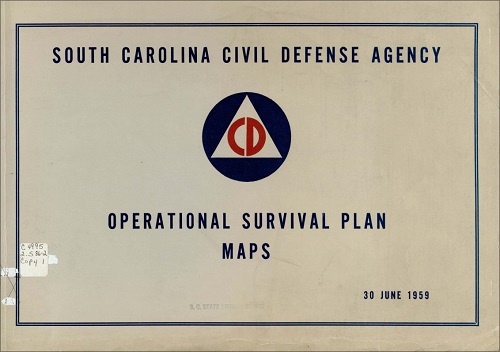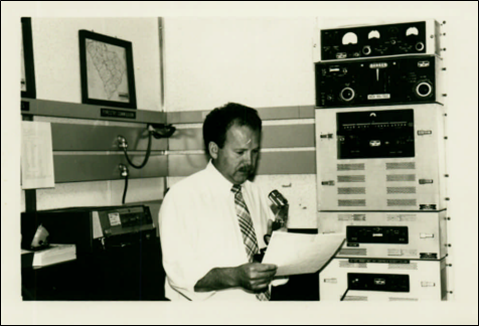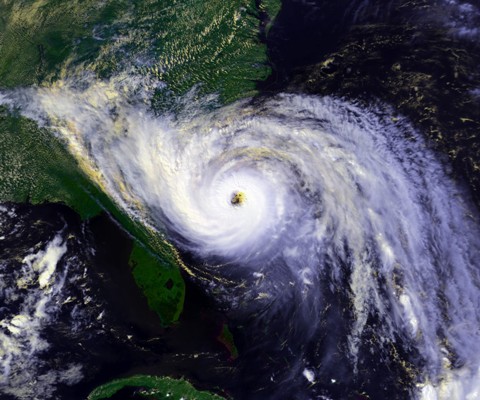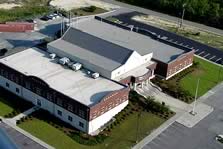The South Carolina Emergency Management Division can trace its lineage back to 1950, although a predecessor in some form probably existed in the context of the Home Guard, which was established during World War II.
South Carolina Civil Defense was organized under Act 888 of 1950 as a division of the Adjutant General's Office at No. 6 Hampton Office Building in Columbia. The agency was directed by Major General James Dozier -- the state Adjutant General at the time -- with a staff of Deputy Director and Secretary. In 1958, Act 888 reorganized South Carolina Civil Defense as an independent agency. Offices moved to 1416 Senate Street. A new director reported directly to the Governor. The agency's staff expanded to Deputy Director, Secretary, Coordinator of Women's Activities and Steno Clerk.

In 1966, the agency, still independent, moved into the Rutledge Building at 1429 Senate Street. The staff included a Director, a Deputy Director, three Assistant Directors heading separate divisions, a Public Information Officer, a Communications Officer, three division officers (Radiological Defense, Training and Property), four Area Coordinators, a Director of Public Education and Family Services, a Community Shelter Planning Officer, a Radiological Maintenance Officer and assorted auxiliary staff.
In 1973, Acts 128 and 410 provided for reorganization of the agency as the implementing and organizational agency for the newly formed State Disaster Planning Board and renamed it as The South Carolina Disaster Preparedness Agency. The Board was the agency's governing body; it consisted of the agency Director, the Adjutant General, the Chief Highway Commissioner, the General Services Director, the Chairman of the Public Service Commission and the General Manager of the Educational Television Commission. The Board formulated and promulgated agency policy. The staff continued to grow and by 1973 included nine Civil Defense Coordinators, a Survey Officer, a Training Officer and an expanded Radiological Division.

In 1977-1978, Act 138 established the agency as a division in the Office of the Governor. The Governor became head of the State Disaster Planning Board, still the agency's governing body, followed by the Adjutant General, Chief Highway Commissioner, General Services Director, Chairman of the Public Service Commission and the General Manager of the Educational Television Commission. The agency Director assumed duties of Secretary and become an ex-officio member of the board. With these changes, the agency decreased in size.
In 1979, Act 199 repealed Act 138 of 1977 and established the South Carolina Emergency Preparedness Division, a division of the Adjutant General's Office with a director appointed by the Adjutant General. Act 199 also established the State Emergency Operations Center, providing the state with a facility to direct, control and coordinate emergency operations.
On May 22, 1982, South Carolina Regulation 58-1 was passed, defining the standards for emergency preparedness at the county level. Among the counties' responsibilities under this regulation was the establishment of a formal emergency preparedness organization and an emergency preparedness plan.
Additionally, on May 22, 1982, South Carolina Regulation 58-101 was passed, detailing the emergency preparedness standards for the state. Under this regulation, county governments were responsible for the conduct of operations within their jurisdictions with the state providing support as needed.

The first major disaster the Emergency Preparedness Division would respond to was Hurricane Hugo, which hit the South Carolina coast on Sept. 22, 1989. Making landfall north of Charleston Harbor, the Category 4 storm caused 35 casualties and more than $6.5 billion in damages, at the time the costliest hurricane to hit the United States. A Presidential declaration was issued for the state that included 24 South Carolina counties that sought federal disaster assistance.
On Oct. 1, 1995, the State Warning Point became active in the State Emergency Operations Center as a result of a budget initiative from the Emergency Preparedness Division. The Warning Point provides a 24-hour-a-day center to monitor, collect and disseminate pertinent disaster and emergency information to government officials at all levels.
In 2000, a portion of the National Guard Armory off Fish Hatchery Road in West Columbia was renovated and turned over to the Emergency Preparedness Division. This new location provided enough space for the Division, State Warning Point, and the State Emergency Operations Center to coordinate the activities of more than 50 government and private-sector organizations. This state-of-the-art facility has helped ensure the state is prepared for emergencies.

The South Carolina Code of Laws were amended in March of 2002, changing the name of the State Emergency Preparedness Division to the South Carolina Emergency Management Division. This change was made to represent the different phases the division is involved in: mitigation, preparedness, response, and recovery. This change also follows the trend of numerous national, state and county emergency offices that had already changed their names to more readily reflect their missions.
In 2006, the South Carolina Emergency Management Division established six emergency management regions. The regions provide staffs that live within their local counties. The staffs coordinate with county emergency management personnel on plan enhancement, training and exercise development and evaluation. In addition, they provide first-hand information to the state.